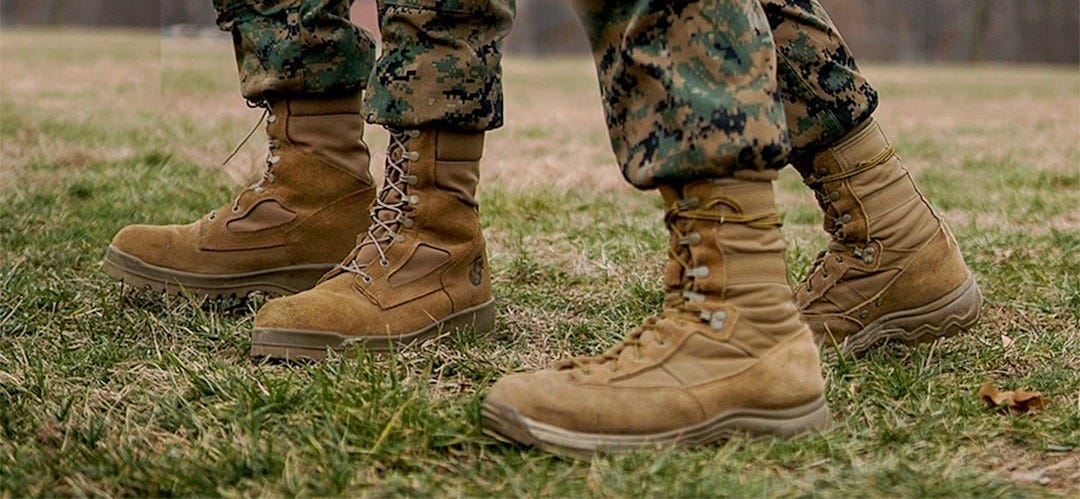How Your Boots Strain Your Pelvic Health & How to Balance it
Did you know the shoes you wear impact your pelvic health? In this article, learn how to care for yourself when you wear boots everyday.
As you navigate the demands of service or prior service and how it has challenged your health, we want to ensure you know what resources are available to you so you can learn more about your body, support your health, and begin to heal.

Are You Wearing Boots Every Day?
Did you know the shoes you wear impact your pelvic health?
I had no idea until five years ago, during pelvic floor physical therapy post-surgery.
If I had to guess, you’ve likely been walking around wearing boots — specifically steel-toed boots — for a long time. The issue is that the weight of those boots forces your body to compensate in ways that place a major strain on your pelvis.
You know, your foot bones connected to your leg bones, your leg bones connected to your hip bones (I hope you read that sing-songy in your head).
We all have a natural way our body moves when we walk barefoot, called our gait. Like me, you have a unique gait that can be impacted and changed due to things like past injuries and tight muscles. When we have shoes on, our feet have to subtly adjust to the weight and restrictions of those shoes, which ultimately impacts the way we walk and how the rest of our body moves.
When your feet consistently compensate for the weight of boots over a long period of time, they become less pliable, the muscle chain from your feet to your pelvic muscles compensates, and your pelvic floor and surrounding muscles become tight (fatigued) and stressed.
TLDR: Your shoes impact your foot health, and your foot health directly influences your pelvic health. But not to worry — I have some tips to help you counterbalance your boots’ impact on your health.
5 Ways to Improve Your Foot Health
Buy Custom Insoles: Insoles custom-made for your feet support your body’s ability to stay as close as possible to its natural gait while supporting the weight of your boots.
Roll Your Feet Daily: Rolling your feet with a tennis ball or foot roller helps relax and release your foot muscles. This practice is accessible and will take you only a few minutes per foot. (Pro Tip: Try adding this to your morning routine before you put your boots on — this will help promote blood flow.)
Get a Reflexology Foot Massage: Massages support the relaxation and release of tired, tight muscles. You can do a self-massage or have a friend or family member massage your feet for a few minutes. ( Pro Tip: Visit a Licensed Massage Therapist to maximize results.)
Try Pelvic Floor Relaxation Modalities: Do deep diaphragmatic breathwork, or consider pelvic floor physical therapy, abdominal massages, or hip-opening specific yoga poses.
Strengthening Your Glutes: Your glutes are your main walking muscles. You want to make sure they are strong and healthy and can consistently support the added weight of your boots. Drop into those squats, do those RDLs, throw in some Good Mornings, and walk it out with some walking lunges.
Remember: The effects of heavy boots are usually subtle at first, but their long-term impact can become more pronounced if you don’t counterbalance their effects now. Prevention now is always better (and easier) than intervention later!







